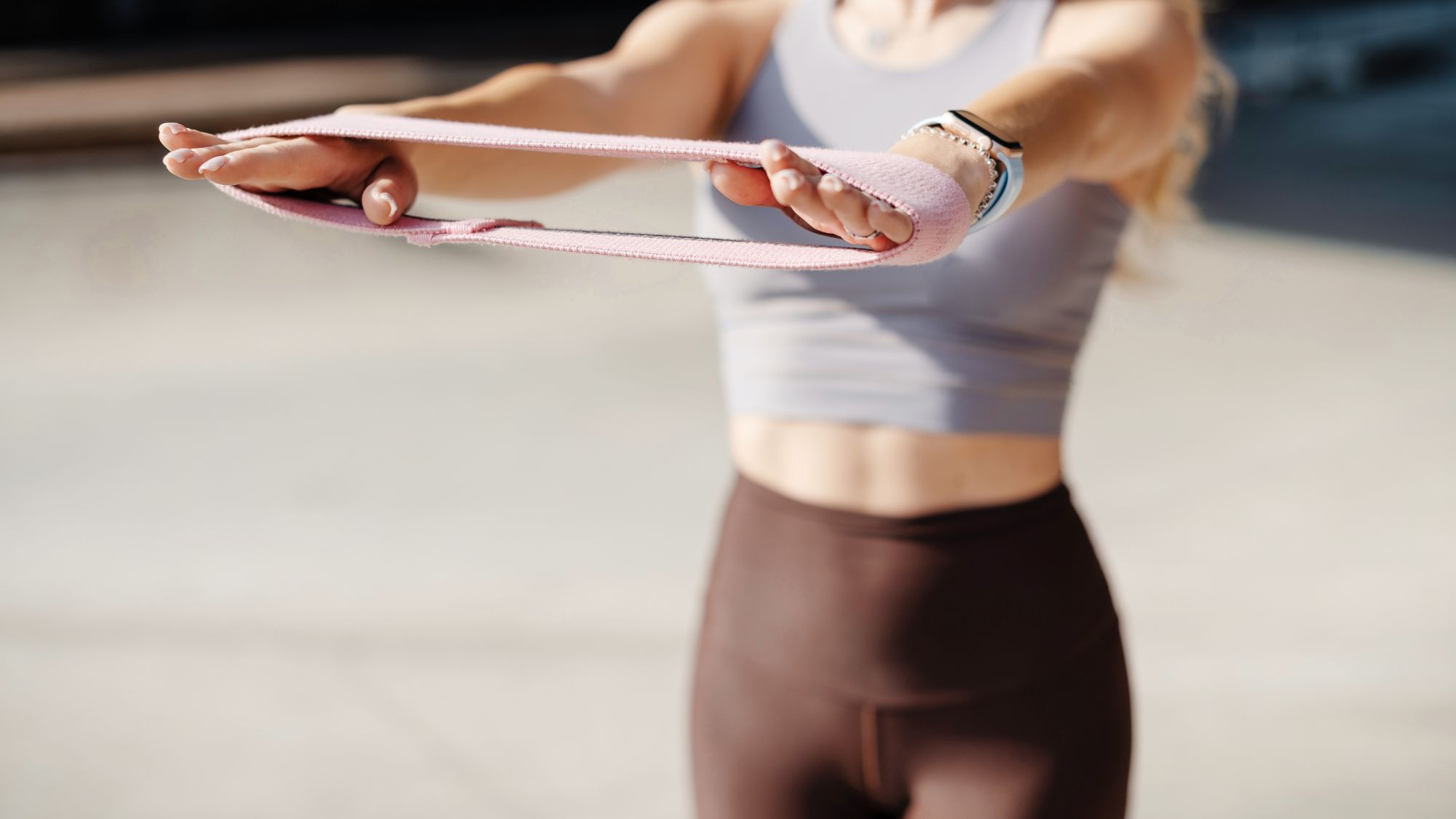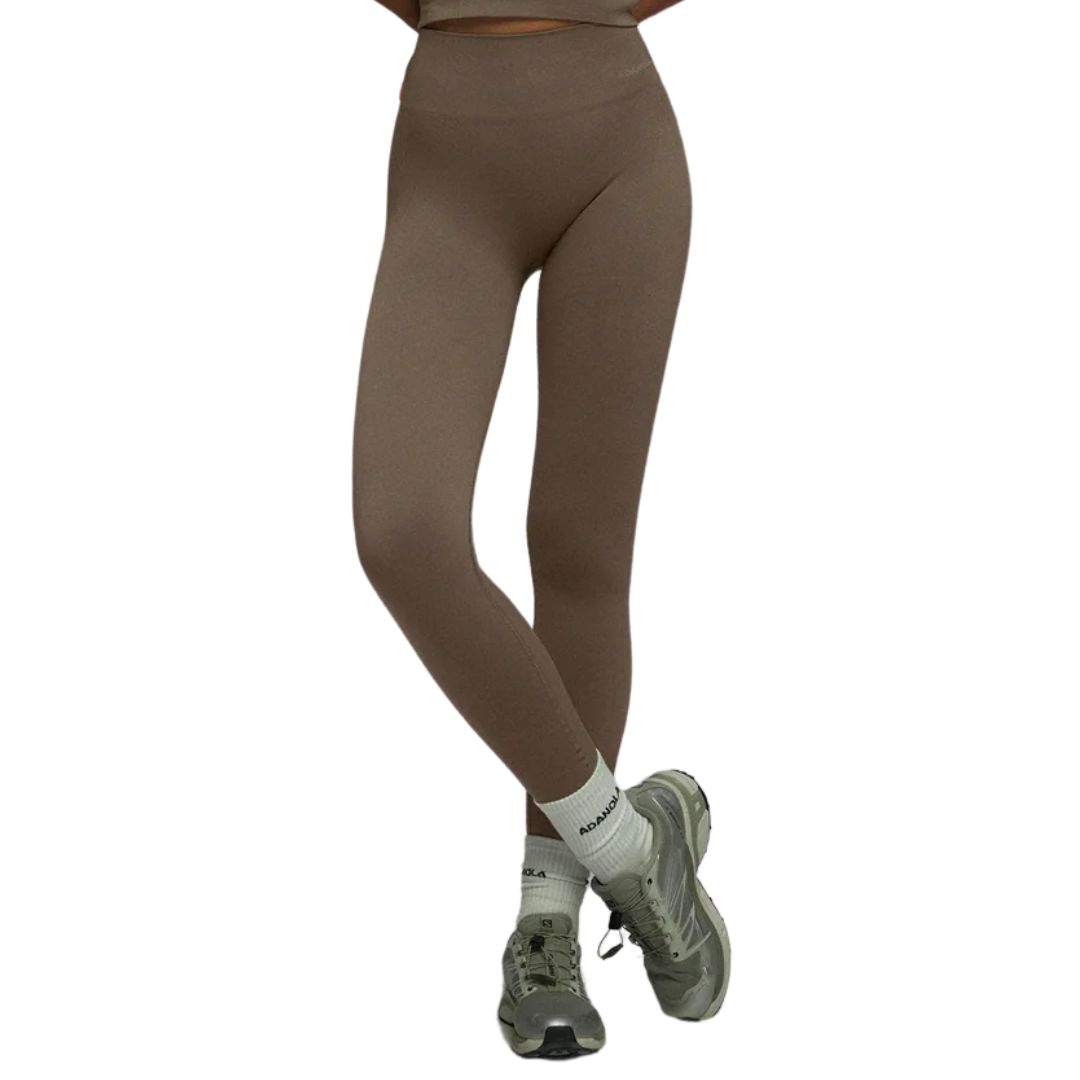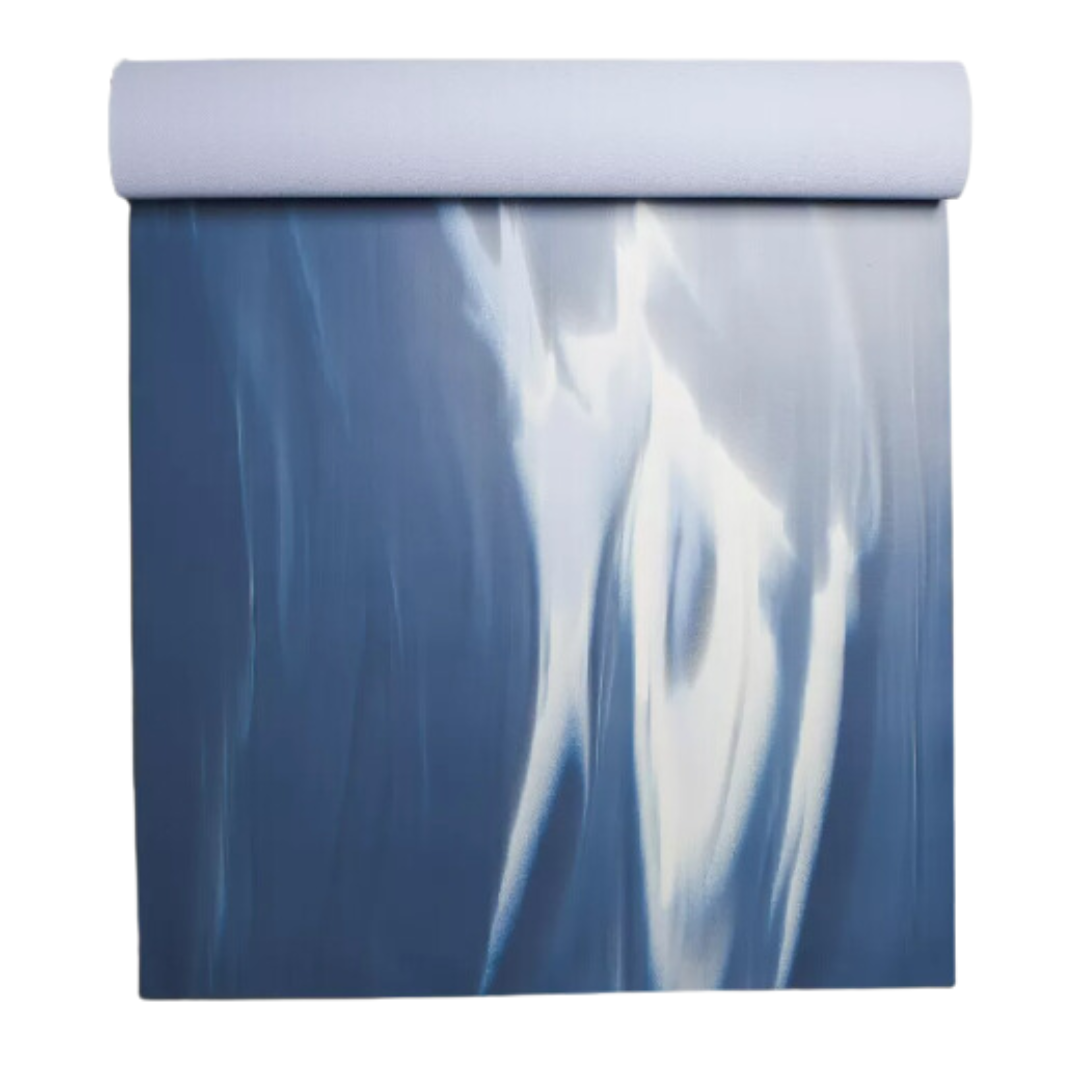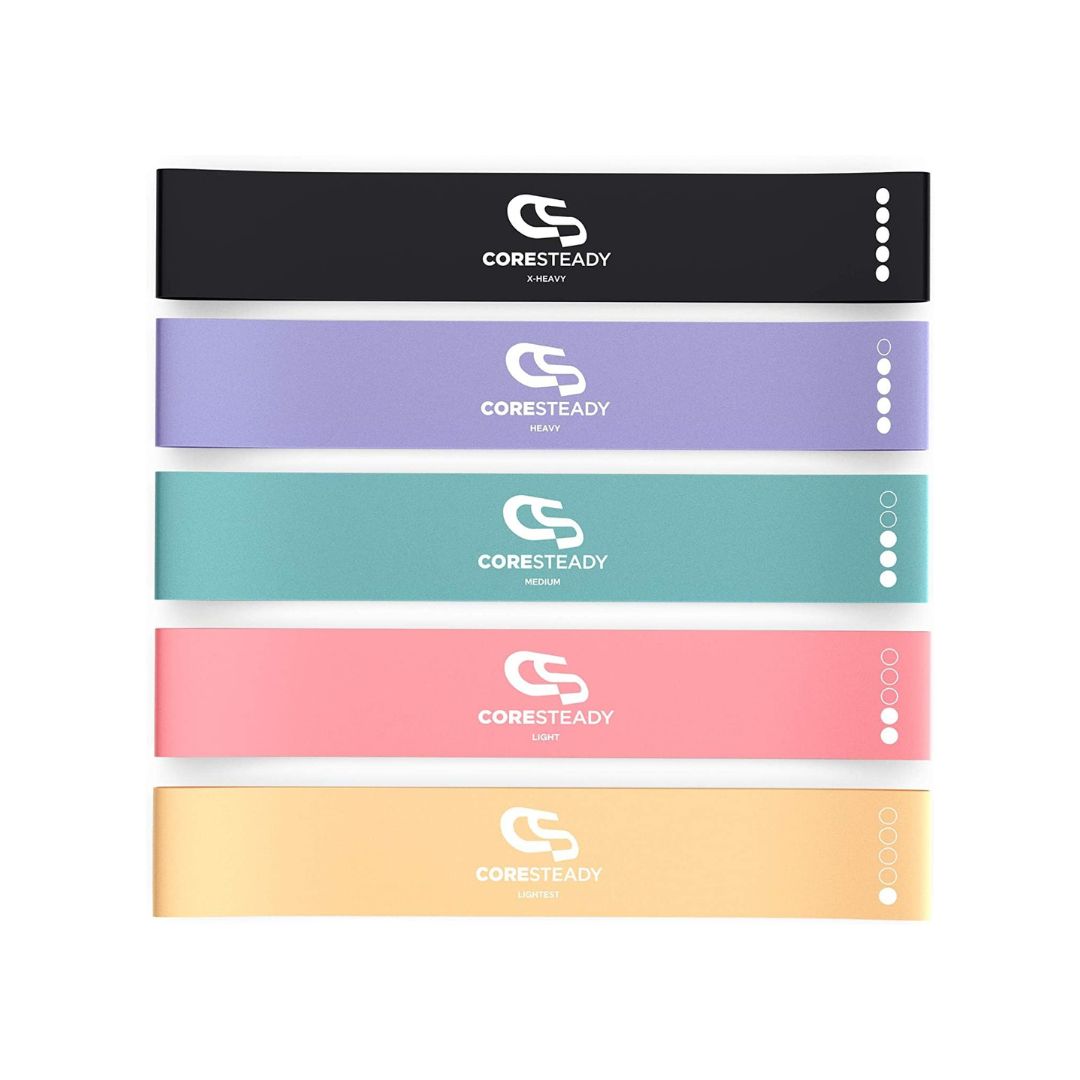Trust me, I'm a personal trainer - these are the foolproof ways to make your resistance band workouts even more effective
You're welcome.

Trust us when we say, resistance bands are having a moment right now. The humble, affordable bit of fit kit has been around for some time, used at home and in gyms alike to add (yep, you guessed it) resistance to your workouts and, in turn, help you build muscle. And if you're wondering how to make your resistance band workouts effective, you're in the right place.
Whether it's the change in season making us want to stay cosy inside or a move towards affordable but still worthwhile workouts, search for resistance band exercises is up +300% on Google at current. That said, there are a few key need-to-knows to have on your radar prior to using them to make them seriously effective.
Resistance band workouts are seriously simple - while still being spicy - once you get the hang of them, but nailing your form and utilising the fitness tool in certain ways can take your workout to the next level.
Below, we've spoken to two of London's top personal trainers to get their take. Keen to get going? We've got the best resistance band leg workouts, best resistance band core workouts and best resistance band arm workouts ready to go. At the start of your fitness journey? Don't skip our explainers on the best resistance band leg workouts for beginners and best resistance band arm workouts for beginners, while you're here.
How to make your resistance band workouts effective, according to top pros
What is a resistance band?
According to personal trainer and Cycle Master Trainer at Third Space, Lucie Cowan, resistance bands are an increasingly popular and versatile fitness tool that can enhance any workout routine, regardless of a person's fitness level.
"Essentially, these bands are stretchable, elastic bands made from latex or fabric, used to create resistance during strength training exercises. They come in various shapes, sizes, and resistance levels, making them adaptable to many different workouts and body types," she continues.
Personal trainer and coach at KXU Louis Quaye rates them too, adding: "They're a great low-impact tool for building strength and endurance."
Celebrity news, beauty, fashion advice, and fascinating features, delivered straight to your inbox!
What are the different types of resistance bands?
Resistance bands generally fall into a few categories, share the trainers. These span:
- Loop Bands: "Shaped like a circle, these are ideal for lower-body exercises such as squats or glute bridges," shares Cowan. They often target the legs and glutes effectively.
- Tube Bands: Next up, tube bands. "These bands come with handles, providing a firmer grip and making them great for upper-body workouts like bicep curls, shoulder presses, or chest flies," the trainer continues.
- Therapy Bands: You may have used a therapy band if you've ever visited a physiotherapist or rehabbed an injury. "These are flat, long, and usually lighter in resistance, most frequently used for rehabilitation or stretching," she shares.
- Figure-8 Bands: Lastly, the clue is in the name with this one. "Shaped like an “8,” these resistance bands are suitable for toning and shaping the arms, chest, and legs," concludes Cowan.
10 tips for making resistance bands more effective in your workout routine:
1. Choose the right resistance level
Cowan's first tip? Start with a band that matches your fitness level. "If the band is too easy, you won’t be challenged; too difficult, and you might compromise your form," she explains. "Ideally, choose a band that allows you to complete your desired reps with effort but still maintain control."
Quaye agrees, adding: "Make sure the band you’re using challenges your muscles appropriately without compromising form."
2. Anchor the bands securely
In other words, make sure your bands are securely attached to prevent accidents, advises Quaye.
Cowan expands: "When performing exercises that require anchoring, like chest presses or rows, make sure that the band is secured around a stable, fixed point. If it’s not, the band could slip or snap, potentially causing injury."
3. Focus on your form
You'll likely know that good form is key to maximising effectiveness and preventing injury. But do you know how to maintain good form with resistance bands? "With bands, the tension changes throughout the movement, so it's key to focus on slow, controlled movements to engage the target muscles fully and avoid jerking or snapping motions," shares Cowan.
Not sure what maintaining good form actually looks like? We've got you covered. "Keep your core engaged and your spine neutral to ensure you’re targeting the correct muscles," advises Quaye.
4. Incorporate exercises that offer full range of motion
Quaye continues by stressing that choosing workout exercises are the best way to get bang for buck with your sessions. "You can maximize muscle engagement by completing exercises with a full range of motion," he explains.
Not sure what these look like? Compound exercises like deadlifts, squats and lunges are a great place to start.
5. Control the eccentric phase
Ever heard of the eccentric phase? It refers to the part of the movement when the muscle is lengthening, for example when you lower a weight, shares Cowan.
Try this: "With resistance bands, resist the urge to quickly let the band retract," she stresses. "Slowly release the tension to maximise muscle engagement and strength building."
Quaye advises focusing on controlling your movement in general, as "slow, controlled movements ensure muscles are activated properly and reduce injury risk."
6. Focus on time under tension
This one's really important - because, as Quaye explains, slow, controlled movements keep muscles working for longer, building more strength.
Try this: "Hold the position for a few seconds at the peak of each movement to increase time under tension," recommends Cowan. "For example, during glute bridges, pause when your hips are fully extended. This helps build muscle endurance and strength more effectively."
7. Add to your usual workout moves
Far from needing to completely overhaul your entire workout plan to add in resistance bands, the beauty of the tool is that they can be used for pretty much any traditional workout move to add a little tension. They work particularly well with bodyweight exercises, like squats or lunges, to increase difficulty and effectiveness, shares Quaye.
Cowan agrees, continuing: "Resistance bands are great for adding a new dimension to bodyweight exercises. Incorporating them into push-ups, planks, and leg lifts increases the intensity without needing heavy equipment. This combination also helps improve stability and control."
Try this: Pop a loop band around your thighs during squats or lunges to increase tension on your legs and glutes, or try a tube band to add tension to your bicep curls.
8. But don't be afraid to mix up your workouts, either
That said, mixing up your weekly workouts or exercise rotation is a surefire way to target all muscle groups, explains Quaye.
Cowan agrees, adding: "To avoid hitting a plateau, vary your resistance band exercises. Incorporate a mix of lower-body, upper-body, and core movements."
Try this: The PT recommends trying new movements like side steps, glute bridges, or banded push-ups to keep challenging your muscles in different ways.
9. Use multiple bands
Ready to seriously up the ante? Cowan always recommends clients consider adding more than one band if they really want to challenge their muscles.
"As you get stronger, don’t hesitate to combine bands for more resistance," she shares. "Layer two bands together for added intensity in exercises like deadlifts, squats, or shoulder presses. This can help progressively challenge your muscles as you build strength."
10. Incorporate them into your warm ups and stretches, too
Last but by no means least, using the handy bands for warm ups and stretching can be a simple way to activate key muscle groups, in turn making your whole workout more effective.
"This is especially important if you’re focusing on lower body or upper body sessions," shares Cowan. "You can also use them for dynamic stretching, which can help improve flexibility and prepare your body for more intense movements."
So, will you be giving resistance training a go?
Shop MC UK's go-to resistance training kit now:

Ally is Marie Claire UK's Senior Health and Sustainability Editor, a well-regarded wellness expert, nine-time marathoner, and Boston Qualifying runner.
Utilising her impressive skillset and exceptional quality of writing, she pens investigative, review and first-person pieces that consistently demonstrate flair and originality.
As well as writing, Ally manages a team of freelancers, oversees all commissioning and strategy for her pillars, and spearheads the brand's annual Women in Sport covers, interviewing and shooting the likes of Mary Earps, Millie Bright, and Ilona Maher. Shortlisted for three BSMEs and winning one in 2022, Ally lives and breathes her verticals: her eye for a story and connections within the wellness sphere are unrivalled. Follow Ally on Instagram for more.



